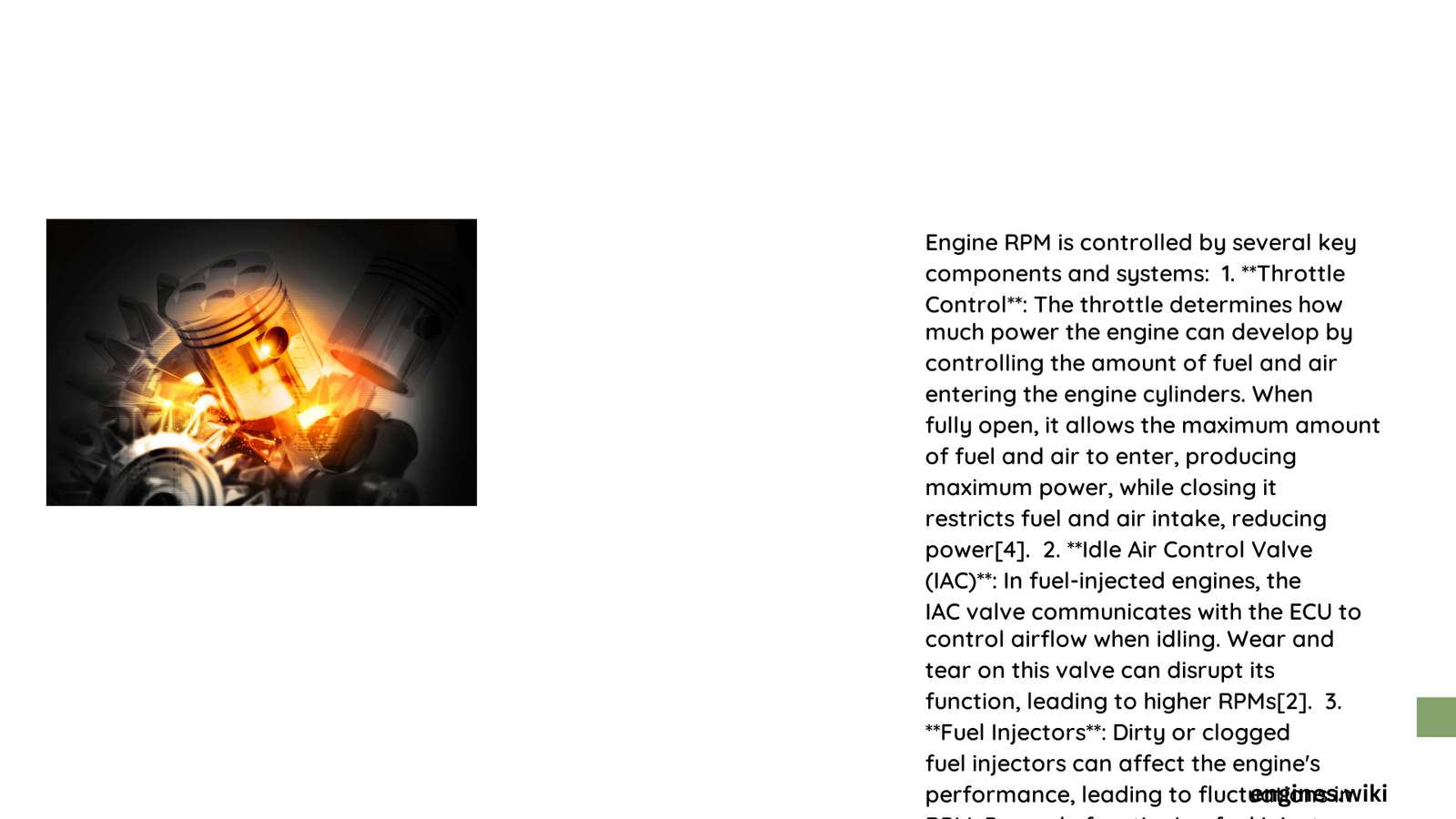Engine RPM control is a sophisticated process involving multiple interconnected systems that work harmoniously to manage vehicle performance. The Engine Control Unit (ECU) serves as the central nervous system, utilizing complex algorithms, sensor inputs, and real-time data processing to precisely regulate engine speed, ensuring optimal performance, fuel efficiency, and smooth operation across various driving conditions.
What Determines the Core Mechanism of Engine RPM Control?
How Does the Engine Control Unit (ECU) Manage RPM?
The ECU acts as the primary regulator of engine RPM through several critical mechanisms:
Sensor Input Processing
- Crankshaft Position Sensor: Provides real-time rotational speed data
- Throttle Position Sensor (TPS): Monitors throttle opening and driver input
- Mass Air Flow (MAF) Sensor: Measures incoming air volume and density
| Sensor Type | Primary Function | RPM Influence |
|---|---|---|
| Crankshaft Position | Speed Measurement | Direct RPM Tracking |
| Throttle Position | Acceleration Input | Immediate RPM Adjustment |
| Mass Air Flow | Air Volume Calculation | Fuel Injection Optimization |
What Role Do Mechanical Components Play in RPM Control?
Mechanical systems work in conjunction with electronic controls to manage engine speed:
- Throttle Mechanism
- Directly translates driver’s pedal input
- Controls air intake volume
-
Provides immediate RPM response
-
Fuel Injection System
- Precisely meters fuel delivery
- Synchronizes with air intake
- Adjusts fuel quantity based on RPM requirements
How Do Advanced Technologies Enhance RPM Regulation?
Modern vehicles incorporate sophisticated technologies for precise RPM management:
Variable Valve Timing (VVT)
- Dynamically adjusts valve opening and closing
- Optimizes engine breathing at different RPM ranges
- Improves overall engine efficiency
Electronic Throttle Control
- Replaces mechanical linkages
- Provides more precise throttle response
- Enables complex RPM management strategies
What Factors Influence Instantaneous RPM Changes?
Several critical factors contribute to immediate RPM modifications:
- Engine Load: Determines required power output
- Ambient Temperature: Affects air density and combustion efficiency
- Altitude: Impacts air pressure and oxygen concentration
- Driving Conditions: Highway, city, acceleration scenarios
Technical Precision in RPM Control
The ECU utilizes complex mathematical models to calculate optimal RPM:
RPM_Adjustment = f(Throttle_Position,
Engine_Load,
Ambient_Conditions,
Historical_Performance_Data)
This algorithmic approach ensures millisecond-level precision in engine speed management.
Performance Implications of Precise RPM Control
Effective RPM regulation directly impacts:
– Fuel efficiency
– Engine longevity
– Performance consistency
– Emissions control
– Driving comfort
Emerging Technologies in RPM Management
Future developments are focusing on:
– Artificial intelligence integration
– Machine learning adaptive controls
– Predictive maintenance algorithms
– Enhanced sensor fusion techniques
Conclusion

Understanding what controls engine RPM reveals a complex interplay between mechanical engineering and advanced electronic systems. The continuous evolution of automotive technologies promises even more sophisticated and efficient RPM management in future vehicles.
